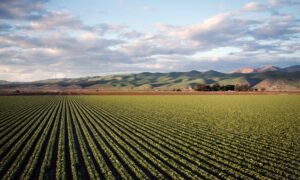Are you curious about the ever-evolving world of agriculture? From feeding billions to driving economic growth, it’s undeniable that agriculture plays a crucial role in our lives. But have you ever stopped to consider its hidden advantages and disadvantages? Join us as we embark on an illuminating journey, exploring the surprising pros and cons of this age-old practice. Get ready to uncover the untold tales behind our food systems and discover how they impact everything from climate change to human health.
Introduction to Agriculture
Agriculture is the art and science of cultivating the soil, growing crops, and raising livestock. It includes the production of plant and animal products for human consumption as well as for other purposes such as biofuels, building materials, and textile fibers. The history of agriculture dates back to the dawn of civilization, when humans first began to cultivate the land for food production.
Over the millennia, agriculture has evolved and changed to meet the needs of a growing population. Today, there are two main types of agriculture: subsistence farming and commercial farming. Subsistence farmers grow crops or raise livestock primarily for their own consumption, while commercial farmers produce crops or animals for sale in the marketplace.
The advantages of agriculture include increased food security and improved nutrition; increased incomes for farmers; employment opportunities for rural communities; and environmental benefits such as carbon sequestration and soil conservation. The disadvantages of agriculture include negative impacts on the environment, including deforestation, soil erosion, and water pollution; competition with other land uses such as urbanization; health risks from pesticide exposure; and labor issues such as child labor and migrant worker exploitation.
Despite its challenges, agriculture plays a vital role in supporting the world’s population. With a better understanding of its advantages and disadvantages, we can work to make it more sustainable and efficient in order to feed our growing world.
Pros of Agriculture
There are many advantages to agriculture. One of the most significant advantages is that it provides food for people. Agriculture also provides a way for people to make a living. It can be a very rewarding profession. Another advantage of agriculture is that it helps conserve resources. For example, farmers can use irrigation systems to water their crops, which saves water. Agriculture also helps to keep the environment clean. Farmers can use crop rotation to help reduce soil erosion and protect the environment.
New Sources of Food
A report by the National Center for Food and Agricultural Policy found that, in 2009, 64 percent of the world’s population lived in countries where the average person consumed more than 2,200 calories per day. This number has been steadily increasing since 1961, when only 8 percent of the world’s population lived in countries where the average person consumed more than 2,200 calories per day. The increase in food consumption is due to a number of factors, including population growth, economic development, and changes in dietary preferences.
With the world’s population projected to reach 9.7 billion by 2050, there is a need to increase food production to meet future demand. Agriculture is one of the most important sectors of the economy and provides employment for about 1.3 billion people around the world. However, it has a number of disadvantages that must be considered when determining whether or not it is a viable option for meeting future food needs.
One of the main disadvantages of agriculture is that it can lead to environmental degradation. Agricultural activities such as deforestation, overgrazing, and intensive farming can damage ecosystems and lead to soil erosion, water shortages, and air pollution. Climate change is also a major concern for agriculture; rising temperatures and changes in precipitation patterns are already affecting crop yields and will continue to do so in the future.
Increased Productivity
Agriculture has been a mainstay of human civilization for millennia. It has only been in the last century or so that we have seen a shift away from traditional agriculture as the primary means of producing food. This is due to a variety of factors, including advances in technology and transportation, which have made it possible to produce food more efficiently in other ways.
However, there are still many benefits to agriculture, even in the modern world. One of the most important is that it can be very productive. With the right techniques and management, an agricultural business can produce a large amount of food with relatively few inputs. This is especially true if the land being used is fertile and has good growing conditions.
Another advantage of agriculture is that it provides employment for millions of people around the world. In many rural areas, agriculture is the only source of income and jobs. If done properly, it can provide a good standard of living for those who are involved in it.
Improvements in Technology
Technology has played a big role in agriculture for many years. Farmers have been using technology to help them with their crops and animals since the early days of farming. Technology has helped farmers increase their yields, decrease their labor costs, and improve the quality of their products.
In recent years, there have been some major advances in agricultural technology. Farmers are now able to use GPS systems to map their fields and track their crops. They can also use precision agriculture techniques to target specific areas of their field that need more attention. These advances have helped farmers be more efficient and productive.
There are also new technologies that are helping farmers deal with pests and diseases. For example, there are now genetically modified crops that are resistant to certain pests and diseases. This means that farmers can use fewer pesticides and herbicides, which is better for the environment.
Technology has had a positive impact on agriculture. It has helped farmers increase their yields, decrease their labor costs, and improve the quality of their products.
Cons of Agriculture
Agriculture has been a part of human civilization for millennia, but it is not without its drawbacks. One of the biggest disadvantages of agriculture is that it can be extremely damaging to the environment. Agricultural practices can lead to soil erosion, deforestation, and water pollution. They can also contribute to climate change by emitting greenhouse gases into the atmosphere.
Another downside of agriculture is that it can be very labor-intensive. Farmers often have to work long hours in difficult conditions. This can lead to low wages and poor working conditions. Additionally, agricultural production is often reliant on hazardous pesticides and fertilizers, which can pose health risks to those who come into contact with them.
Environmental Impact
When we think of agriculture, we often think of the environmental impacts that come with it—things like deforestation, soil erosion, and water pollution. However, there are also a number of positive environmental impacts that come from agriculture. For example, agriculture can help reduce greenhouse gas emissions, provide habitat for wildlife, and improve water quality.
There are a number of ways that farmers can reduce the negative environmental impacts of their operations. For example, they can use more efficient irrigation systems to reduce water waste, implement crop rotations to improve soil health, and plant trees and other plants to help combat climate change.
Loss of Biodiversity:
The loss of biodiversity is one of the most serious disadvantages of agriculture. The conversion of natural habitats to farmland leads to the loss of plant and animal species. This loss of biodiversity can have severe consequences for the ecosystem, including a decrease in the number of pollinators and a reduction in the amount of carbon dioxide that is sequestered by plants.
Health Risks
When it comes to the health risks associated with agriculture, there are a few key things to consider. First, agricultural workers are at an increased risk of developing certain types of cancer, including skin cancer and leukemia. Second, exposure to pesticides and other chemicals used in agriculture can lead to a number of health problems, including respiratory problems and neurological damage. Agricultural workers are also at an increased risk of injury due to the use of heavy machinery and their exposure to dangerous working conditions.
Conclusion
Farming is an ancient practice that has been essential to human survival for millennia. Although the methods and technologies have changed over time, the basic premise of farming—growing food to eat—has remained the same. Today, as the world population continues to grow and demand for food increases, farming is more important than ever.
There are many advantages to farming, including the ability to produce large quantities of food, the provision of employment opportunities, and the promotion of environmental stewardship. However, there are also some disadvantages to consider, such as the potential for negative impacts on human health and the environment.
Farming is still a necessary part of our world. With careful planning and management, we can minimize the negative impacts of agriculture while continuing to reap its many benefits.



































